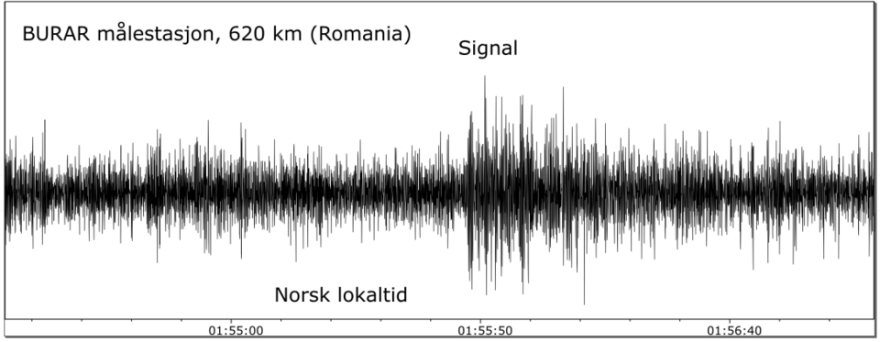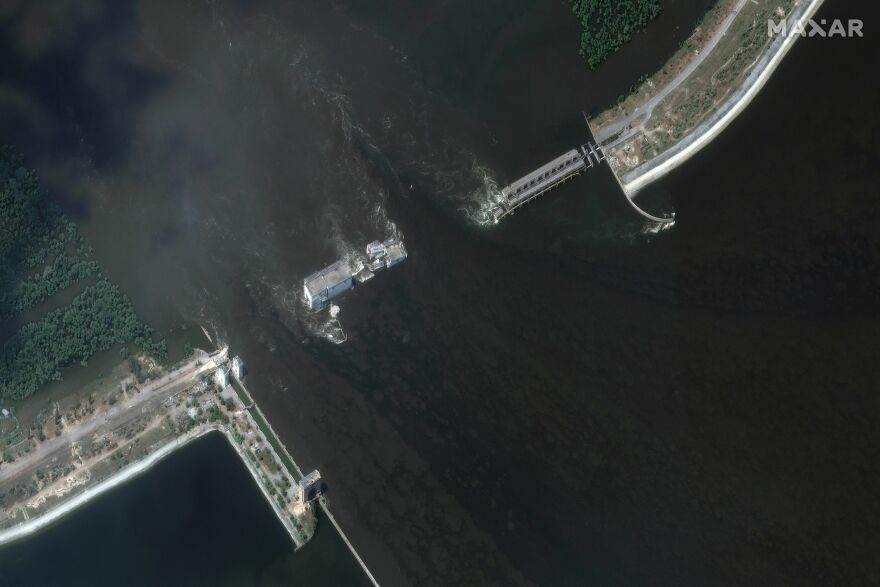Seismic stations in Ukraine and Romania detected what appears to be an explosion at the Kakhovka Dam on the morning that it failed, Norwegian seismologists tell NPR.
The analysis was done by NORSAR, a Norwegian group that monitors seismic networks throughout Europe. According to their data, the explosion took place on June 6 at 2:54 AM local time in Ukraine. The detection is the first piece of independent evidence that the dam, which held back a reservoir roughly the size of Utah's Great Salt Lake, was blown up, rather than collapsing from strain and mismanagement.
At a press conference earlier today, Ukrainian President Volodymyr Zelenskyy called for an international investigation of what happened to the dam.
"The evidence should be carefully collected and presented," Zelenskyy said during an online press event about the dam collapse. "Without international investigation teams ... we won't be able to do that."
Loading...
The Kakhovka Dam sat on the front lines of the war, with Russian forces on one side and Ukrainian troops on the other. In recent months it had endured bombardment at the hands of Ukrainian forces and at least one explosion, believed to be caused by retreating Russian troops who blew up a road over the dam.
The dam had been under even more stress in recent weeks. Spring rains had filled the Kakhovka Reservoir to capacity, and water had been spilling over the top of the dam, which did not have enough sluice gates open to manage the flow. Russia, which controls the dam, only had a few of its 28 gates open since November of last year.

The strain and previous damage to the dam led to speculation that it might have collapsed on its own. But according to NORSAR, which monitors for underground nuclear tests and other seismic events, there was an explosion detected around the time the dam is thought to have collapsed.
"We see a pulse of energy which is focused, which is typical of an explosion," Volker Oye, a seismologist at NORSAR who's analyzed the data, told NPR.
There is still uncertainty. The seismic arrays can't locate the blast to closer than within 20-30 kilometers (12-19 miles) of the dam. But Oye says explosions in this particular part of Ukraine are rarely seen, and so a blast due to something else would be an unusual coincidence.
Nor can the the detection say what caused an explosion. Russians accuse Ukraine of attacking the dam, but Ukrainians claim Russians used demolition charges to destroy it.
Copyright 2023 NPR. To see more, visit https://www.npr.org.




